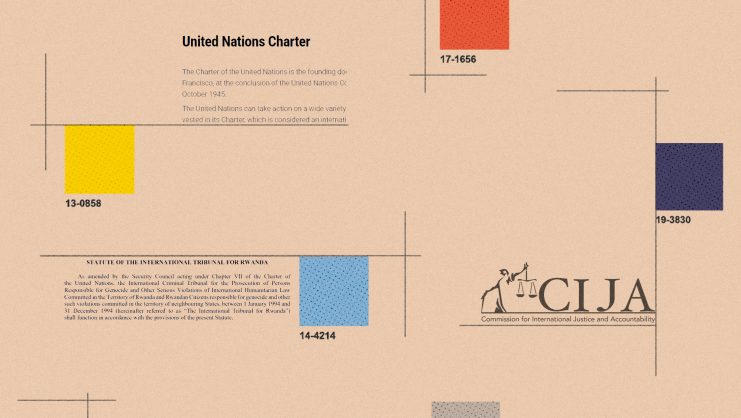Now that both the Democrats and the Republicans have held their conventions and the debates have come and gone, the US campaign for president is in the last stretch. This is exciting news for those of us who love to follow the polling, because now it really means something.
That said, it’s critical to note that the polls aren’t crystal balls, but snapshots of what is happening at the time the data is gathered. Upward, downward, or stable trends can help us understand how the news, campaign events, and other happenings might influence public opinion. However, polls are not predictive, regardless of what many news articles might lead you to believe.
It’s hard to blame journalists and editors for ginning up the so-called horse race of the polls — they are exciting and even a bit sexy! But too many journalists who report on the polls do so without much or any training in quantitative methodology and tend to use meaningless terms such as “statistical tie,” terms that drive political scientists up a wall. Also, not all polls are created equal; some are more reliable than others. Like most things in politics and international relations, it’s complicated and often the media doesn’t have the time nor the fortitude to detail the nuances.
Thus, I will attempt to clarify U.S. presidential polling, with a few questions and answers:
Why is there both national and state-by-state polling?
National polls are considered important because it has always been — and continues to be — very difficult to win the electoral college without the national popular vote. Yes, there have been two such elections, in fact, in very recent memory (2000 and 2016) so we know that it is not impossible. This is why state-level polling is much more precise in terms of getting an idea as to where things might go on November 3. The problem is that not all states are conducting the same type or amount of polling, so a national picture is difficult to obtain.
How does the electoral system impact polling and the election results?
Navigating U.S. presidential election polls has always been complicated by the electoral college system, which gives more weight to voters in rural, less populated states. (This is the same situation as the U.S. Congress, by the way.) This is because the electoral system is based on a state’s representation in congress. All 50 states have two senators and then each state has a percentage of the 435 members of the House of Representatives. No matter how small a state is, it gets at least one representative. So, the state with the smallest population, Wyoming (578,000 residents), has two senators and one representative, which means they have three electoral votes. Compare that with my home state of California, the most populous state with nearly 40 million people. It has two senators and 53 representatives for a total of 55 electoral votes. This might seem like a lot, but California is woefully underrepresented: a Wyomingite’s vote counts about 3.6 times more than a Californian’s vote in the presidential election because those three votes represent so many fewer people.
Essentially, a candidate just needs more than 50% of the state’s popular vote in order to win all of that state’s electoral votes. This has a profound effect on campaign strategy and polling. Wyoming and California are great examples of reliably Republican red and Democratic blue states. The only reason candidates go to California is to raise money, and while this might irritate Californians, it makes sense. California will vote for Biden in the coming election. Hillary Clinton won California by nearly 4.3 million votes, that’s more than the nearly 3 million vote advantage she had over Trump in the national popular vote. This is why it’s a great example of how this system makes the popular vote irrelevant: all that matters is getting to 51%, every percentage point above that just goes to waste and if a state is in the “solidly Democratic or Republican” column, then there’s no need for a candidate to campaign there.
Why are the so-called swing states so important?
The swing states, also called battleground states, can swing towards one candidate or the other and can therefore be influenced by campaigns. Pollsters don’t always agree on which states are in play. Polling website Fivethiryeight highlights nine of the closest races: North Carolina, Ohio, Florida, Georgia, Arizona, Iowa, Texas (yes, Texas), Pennsylvania, and Wisconsin. Real Clear Politics lists just six “top battleground states”: Wisconsin, Michigan, Pennsylvania, North Carolina, Florida and Arizona, leaving out Texas, Georgia, and Ohio. Sabato’s Crystal Ball rates four states as “toss ups”: Arizona, Wisconsin, Florida, and North Carolina with another four leaning Republican and five leaning Democratic. These four states are at the core of all swing state analysis right now.
Beyond having polls that show the state could move towards either candidate, having a hefty number of electoral votes is also of interest. This is why Florida is so important, with its 29 votes and why Michael Bloomberg announced that he will spend $100 million in the state to help Biden win it.
But again, the difficulty with polling in individual states is that it’s uneven. Not all states get the same amount of polling, let alone high-quality polling because it is expensive. This was a big problem for Michigan, Pennsylvania, and Wisconsin in 2016, all swing states then and now. Back in June, The New York Times and Siena College made headlines with a deep dive of polling into the swing states that Trump won in 2016: Michigan, Wisconsin, Pennsylvania, Florida, Arizona, and North Carolina. This was very welcomed by analysts and pollsters alike.
Do the Republicans have an advantage in the electoral system?
The short answer is yes. As mentioned above, the electoral system gives more weight to rural voters, and these regions tend to lean more Republican whereas urban voters tend to vote Democrat. This is why you’ll find Democrats wanting to change the electoral system or add more seats to the House of Representatives while Republicans are content with a system that works in their favor. Important to note, however, is how US demographic changes such as a rise in Latino voters is changing how some states vote. Once a Republican stronghold, Texas is now considered a state in play by many pollsters because of this demographic shift, a change that will likely continue over the next few years.
What polls should I follow?
For the most complete picture leading up to the actual election results, the best option is to go to websites that collect polling from a variety of sources. For example, Nate Silver’s Fivethirtyeight.com has had various iterations and media affiliations over the years and serves as a poll of polls, weighting things like the polling organization’s rating and the most recent over older polls. This is the case for their national polls tracking but also with their election forecast, which is a prediction model based on state polling.
RealClearPolitics is another reliable place to find both national polling and map with state by state figures. A site popular with pundits is the Cook Political Report, which also has a map that reflects the state by state polling and Sabato’s Crystal Ball also provides a solid analysis.
What about the forecasts or predictive models?
Much of the polling confusion of 2016 can be blamed on forecasts and predictive models. Why? Because while most voters and journalists are accustomed to raw national polling numbers or electoral maps of state polls with candidates either within a few points of each other or with one in a clear lead, prediction models use mathematical formulas that involve polling to run simulations of election outcomes.
In 2016, this meant that the Upshot for The New York Times typically gave Hillary Clinton a 90% or higher chance of winning, dropping to 85% on election day. The Huffington Post gave her 98-99% chance of winning. So, it’s easy to see how many analysts and voters were lulled by the idea that Clinton had the election in the bag when she was simultaneously only leading by about 3.9 points in the national polls on election day. Probably the worst use of polling during the 2016 US election cycle was from Spain – and it is back again this year, in which a journalist from El País has taken an average of five prediction models, combining wildly differing methodologies. It just makes no scientific sense at all to average them and believe that figure tells anything of value.
Fivethirtyeight was notably more conservative in its assessment, giving Clinton a 71.4% chance of winning to Trump’s 28.6%, but was still subject to scathing criticism. But the thing is, as Nate Silver explained in post-election analysis, this meant that nearly 30% of the time, their model came up with a win for Trump. That’s a considerable chance of winning. But again, predictive or forecast models are relatively new and it’s just too easy to get carried away with these seemingly big percentages as compared to what we see in polling.
For 2020, Fivethirtyeight is presenting their forecast not as percentages but as a chance-out–of-100 of winning. This is helpful. At the time of writing this, Biden is given an 88 in 100 chance of winning compared to Trump’s 12 in 100.
Are Trump voters really so shy with pollsters?
Trump voters are not shy. They are more than happy to declare their support, but the kind of people who support Trump are less likely to answer an unknown phone call or talk to a pollster. Americans are bombarded by telemarketers so that’s already a big challenge for pollsters, but Trump supporters are especially wary of anything they consider political establishment, such as polling firms, and are likely to simply hang up. Because the Trump phenomenon was new in 2016, many pollsters were caught off guard by this, as well as with the education metric.
Nate Silver calls this the “dirty little secret of polling” but weighting is a fact of life because it’s impossible to take a random sample that is perfectly balanced for race, gender, education, socio-economic level, political leanings, geographical location, etc. So, once a poll is completed and there are not enough men polled, for example, the researchers will simply adjust the male responses so that they count for 49.2% of the results. This is, of course, a deeply challenging aspect of polling because it’s impossible to perfect and pollsters don’t often adjust for every single demographic. In 2016, many didn’t adjust for education levels and this is how many Trump voters were missed. That said, any decent poll will explain the weighting in its methodology.
What other metrics are worth paying attention to?
Other metrics, such as Trump’s approval rating, are indicative of how the race is going. Another important one is how well the candidates are raising and spending money and OpenSecrets tracks this information. Finally, there’s historian Allan Lichtman, who has successfully predicted presidential elections since Ronald Reagan and then used his model to retroactively predict elections from the past 120 years. This year, he has predicted a Biden win.
What is interesting about the polls now?
Neither party seems to have gotten a traditional post-convention bounce in the polls, which was widely expected. Beyond that, Biden’s lead in the national polls and also in many of the swing states has been significant for months and while individual polls don’t tell us a whole lot, long-term trends among many polls show that Biden’s lead is solid, for the moment. There is still a bit of time between now and November 3, and perhaps that will include a surprise or two. We will have to watch the polls.
© IE Insights.











